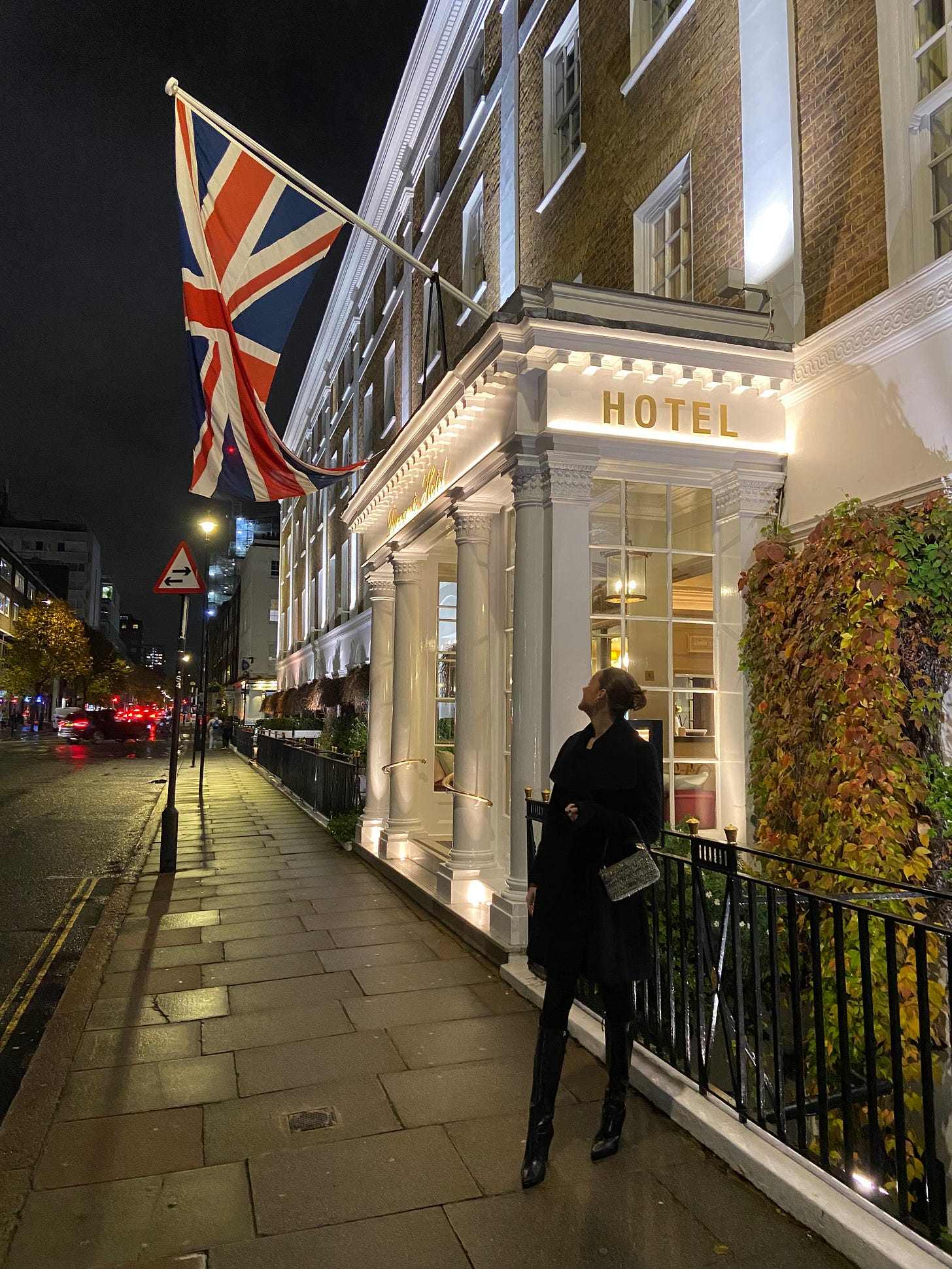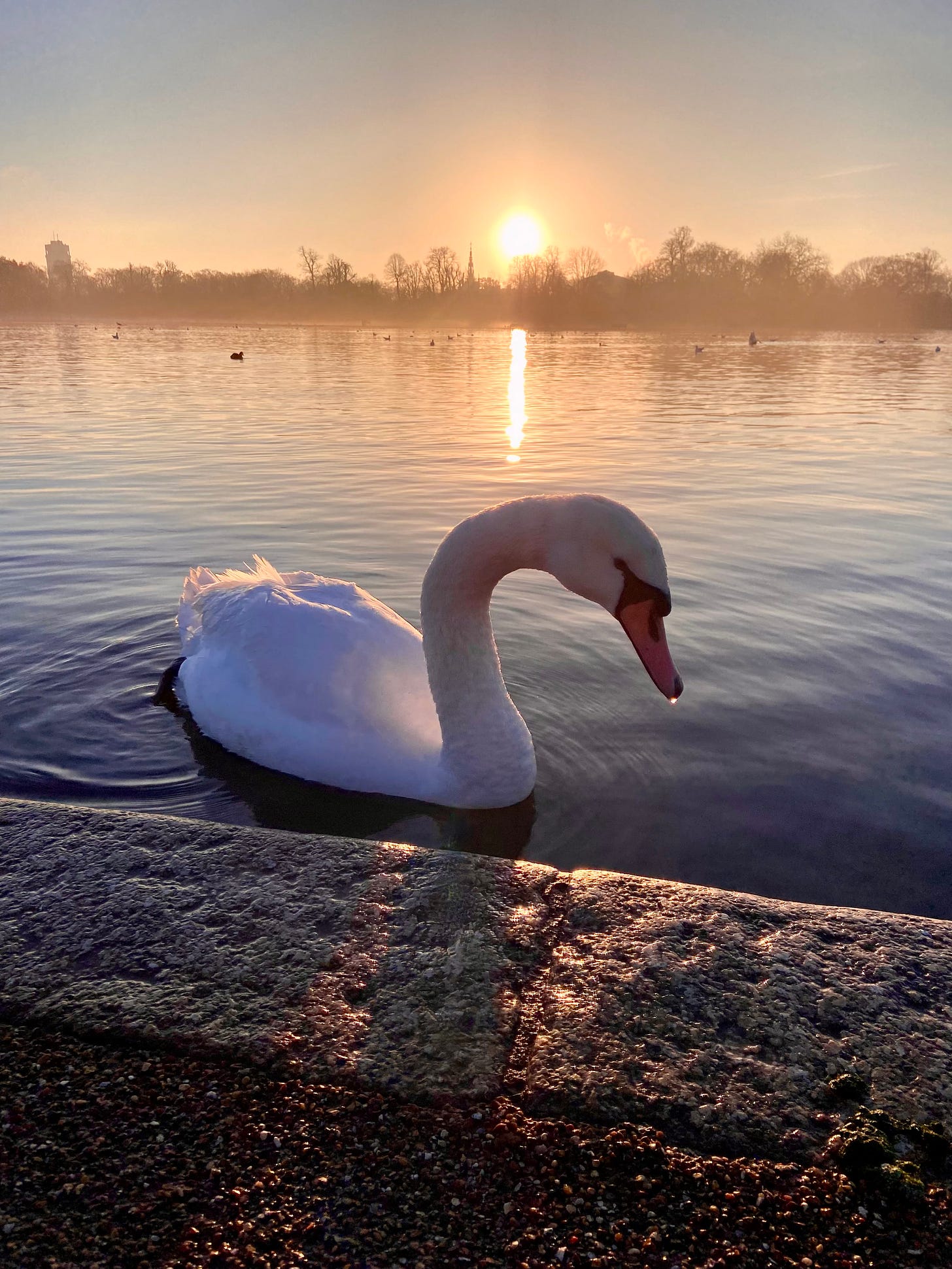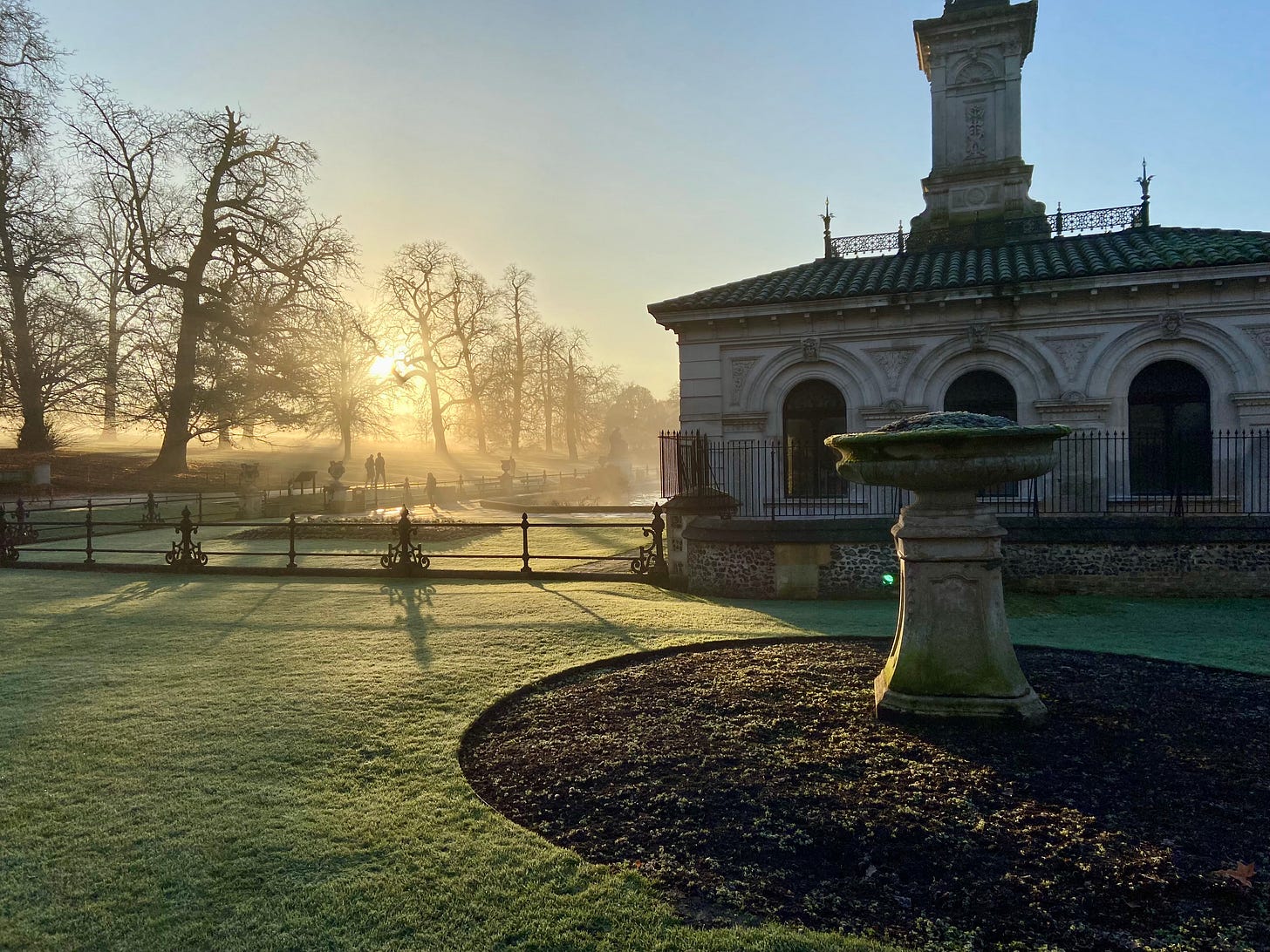Last week, I had the honour and pleasure of visiting London to attend the Financial Times / Schroders Best Business Book Award at a gala in Claridge’s, no less. (My most recent book, with Oxford Professor Bent Flyvbjerg, was short-listed.) And I was there with my university-student daughter, who was as delighted by London as her history-obsessed, anglophile father always is. So this was a special occasion.
We took a long walk in Hyde Park one chill, sunny morning. I’ll post some photos here because they make me happy. And I need cheering up — because immediately after returning to Canada, and shortly before I was due to go back to Europe for an important meeting, I got covid. The virus is really doing a number on me. Imagine a dozen angry gnomes ceaselessly pummelling every muscle in your body with tiny hammers. I’ll spare you descriptions of the several other symptoms.
Here is a swan.
To take this shot, I almost had to put my phone up to the swan’s beak. The swan didn’t care. I don’t think the swan even noticed I was there. Thanks to an endless procession of people trouping by and doing them no harm, the swans and ducks in Hyde Park pay no attention to people. Truly none. Like I wasn’t there. It’s the most extreme habituation — the same phenomenon Jane Goodall used to study chimpanzees — I’ve ever encountered.
Which is fortunate because swans are nasty buggers and sticking a lens up one’s beak would normally end badly.
Some fun facts about Hyde Park: It was opened to the public in 1637, and before then was a private reserve of the reigning monarch since Henry VIII obtained the land for hunting a century earlier.
Now, if you know anything about Henry VIII, you can probably guess that Henry did not pay fair market value. So how did he obtain the land?
It was owned by the monks of Westminster Abbey. When Henry broke with Rome, he pillaged monasteries across England, helped himself to Hyde Park, and had a splendid time skewering boars and whatnot.
One could thus argue Hyde Park’s current incarnation as an island of natural grace and history, open to all, is evidence of civilizational progress.
In any event, it is gorgeous.
Two more photos follow. The first features the statue of Queen Victoria in front of Kensington Palace, where the ruler of all the pink splotches on the map was born.
Before I go quaff some medicine and collapse, I have to gush about the hotel I stayed in. And ask you, dear readers, a related question.
Durrant’s Hotel is located in Marlyebone. Or maybe Mayfair. I don’t know the boundaries. In any event, it’s wonderful.

Heavy wood panelling. Creaky old floors. Oil paintings of fat men in red coats and ships giving Boney hell. It’s the sort of place where you expect to see a blunderbuss or two. And by God, there is a cosy little snug — that’s a small private room in a pub — with a blunderbuss, a musket, and two pairs of flintlocks. Also a fireplace and good gin. Something very similar will be my eternal reward if I die a good man.
“Owned and managed by the Miller family,” the hotel’s “About” section says, “Durrant’s has been welcoming guests through its doors for over 100 years.” Good on the Miller family, but that’s selling the hotel short. The building is plainly 18th-century and its official heritage listing says that while it originally consisted of a row of townhouses, built around 1780, it was converted to a hotel in the early 19th century. And it really shows its age.
To be clear, I mean that entirely as a compliment. Durrant’s has all the modern conveniences and comforts a traveller could want. But that’s not what I look for in a British hotel. I want floors that slope this way and that, undulating like the North Atlantic. I want a bewildering warren of tiny stair cases that makes the newcomer think he is entering the Gryffindor dormitory. I want doorways and walls that struggle and fail to form right angles.
I want a hotel where Sean Bean wouldn’t look out of place if he checked in wearing a rifleman’s jacket and a shako.
That’s exactly what Durrant’s is. I am reasonably sure there isn’t anything even close to a right angle in the whole building.
I absolutely loved it, is what I’m saying. You will, too.
But now here’s my question.
I really do have a fixation with old buildings that have wonky angles. I love them. The wonkier the angles, the better. And I’ve developed an impression that angles within buildings don’t simply get wonkier with age in linear fashion. Rather, my impression is that buildings constructed after a certain point — I would guess mid-19th century — suddenly become much more precise, and are much more likely to be infested with right angles. It’s only buildings erected substantially before then that are wonderfully off-kilter.
I once spotted a seemingly perfect illustration of my impression at a bed in breakfast in Maine. One section of the old mansion was charmingly old, but insufficiently wonky for my taste. But another section was a fabulous madhouse of angles, none of them ninety degrees. The owner told me the former section was built mid-19th century, while the latter was the original house, built late 18th century. Before right angles; after right angles.
Or this may be my brain imposing order on a jumble of random impressions.
So for those of you who know something about historical building methods, do you think there’s anything to this? Did something change in construction techniques or materials mid-19th century that resulted in more precise and reliable construction? (Or more boring construction, to put it in my terms.)
As always, all comments welcome.
And by the way, “Blighty”? You probably know it’s old British army slang for Britain. But do you know its origins? I was amazed to learn 57 seconds ago that it is a corruption of the Hindustani word for “foreign.”









I read a book a few years ago about the history of elevators. Before elevators, buildings were wonky in that rooms and hallways did not line up from floor to floor. After elevators, buildings had to be much more regular to accommodate elevator shafts. The book is Lifted: A Cultural History of the Elevator by Andreas Bernard (my review is at https://www.goodreads.com/review/show/1022629049).
beautiful photos, so thanks. I am on my city's local heritage committee and we deal with old buildings a lot, so I am going to forward this to the chair of the committee, an old friend, and he may have answers. I also am a member of the Architectural Conservancy of Ontario so suggest you may wish to contact them. I love old non-ninety degree rooms. But try fitting in some furniture in one; 'taint easy.
Gail B